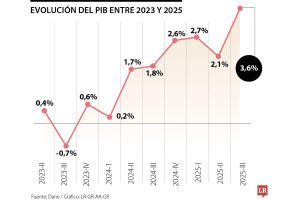As inflation finally seems to be coming under control, and growth is slowing as the global economy feels the full impact of higher interest rates, 2024 could be a compelling year for bonds. A decade of extremely low interest rates, followed by the Federal Reserve’s aggressive turn in the opposite direction, created a challenging environment for bond investors over the last two years. However, the environment for fixed income may improve greatly from here. Here’s what investors should understand about the outlook for the bond market and what to watch as the year unfolds.
Positive Signals for Future Returns
At the beginning of 2024, bond yields, the rate of return they generate for investors, were near post-financial crisis highs1—and for fixed-income, yields have historically served as a good proxy for future returns. Morgan Stanley research shows a strong correlation (0.94) between starting yields for the Bloomberg U.S. Aggregate Index, which is a broad measure of investment-grade bonds, and total returns over the subsequent five years. The correlations are as strong or stronger when looking at returns over six to 10 years. In other words, at current yields, there is significant opportunity for high-quality fixed income to generate attractive total returns—and reclaim its critical role providing income and portfolio diversification.
To be sure, after the bond-market rally late last year, bond investors’ price valuations assumed there would be aggressive rate cuts by the Federal Reserve, anticipating a straight line of cooling inflation without a significant decline in economic activity. They are still expecting this kind of economic soft landing. There is little room for unexpected outcomes in economic, monetary or geopolitical events, given where markets are priced. Compared to equities, though, bonds’ total returns tend to be less sensitive to interest-rate risk, because of the yield cushion that help mitigate the potential for negative effects of duration risk—a cushion that remains sizable today.
One could argue that significant gains for fixed income at the end of 2023 stole away part of 2024’s potential returns, but the counterpoint is that the fourth quarter rise in bond prices and drop in yields mostly unwound third quarter moves in the opposite direction. What’s clear is that underlying inflation in the U.S. has slowed considerably, with the Federal Reserve’s preferred gauge, the core personal consumption expenditures (PCE) price index, on a downward path toward its 2% inflation target. The Fed has indicated that it has finished its rate-hiking cycle and intends to pivot in 2024. This creates, based on historical trends, an opportune time to add duration to the fixed-income portion of investors’ portfolios.
Lower Rates on the Horizon
The Fed has signaled a planned pivot from its series of rate increases. Historically, a period of rate cuts has been a compelling time to increase duration in fixed-income allocations. If rates decline over the course of the year, we believe high-quality fixed-income of intermediate duration has the potential to generate total returns that are substantially greater than current yields. In the last five Fed tightening cycles, high quality fixed income indices have outperformed in the one- and three-year periods after the last rate hike, compared with the index returns for short-term bonds and cash—in some cases, by significant margins. Investors should consider reducing their cash and cash equivalents, extending their portfolio duration and locking in yields.
Stocks and Bonds Parting Ways
Seeing fixed income revert to its traditional role in portfolio diversification would be welcome, after two years in which aggressive Fed policy created a challenging environment for bond investors. In recent periods, fixed-income produced negative returns in lockstep with negative equity returns—but we expect those days should be coming to an end. As the Fed pivots toward cutting rates, stock and bond returns should once again move in opposite directions, re-establishing a mix of the two as a linchpin of the attractive risk-return profile of a balanced portfolio strategy.
Sectors to Watch
Given the potential for the bond market as inflation slows and interest rate cuts appear likely, investors can monitor fixed-income opportunities in three sectors.
- Intermediate duration: Duration measures a bond price’s sensitivity to interest rate changes, and intermediate-duration holdings may be attractive in a period when policymakers are considering rate cuts.
- Agency and non-agency securitized bonds: Agency mortgaged-backed securities’ (MBS) spreads relative to Treasuries have widened due to weak technical demand in the market, leaving them at attractive long-term valuations. Additionally, non-agency MBS, asset-backed securities, commercial mortgage-backed securities and collateralized loan obligations could offer investors access to fundamentally strong collateral and cash flows at compelling long-term valuations.2
- Select sectors of investment-grade corporates. Investors should assess money center banks and super regional banks because they have healthy balance sheets and offer strong yields, particularly when compared to risk-free government securities. Although investment-grade bonds are more appealing than below-investment-grade bonds at current valuations, select allocation to below investment grade corporates may enhance fixed income portfolio yields and be warranted with the current macro-economic backdrop.
Key Considerations
What else should investors be watching as the year unfolds?
- Central banks: A significant part of the bond market’s prospects will come down to how monetary moves stack up against the changing rate-cut expectations that investors have priced into fixed-income markets. This year, we also will be watching for central banks in different regions to potentially move in divergent directions.
- U.S. and European economies: As Europe’s growth slows more quickly than that of the U.S. economy, European fixed-income markets may be relatively more attractive.
- Default rates: While the labor market continues to show strength broadly, pockets of weakness in either corporate or consumer defaults could be a bad sign for the U.S. economic outlook.
- Geopolitics: As conflicts in Ukraine and the Middle East continue, there is potential for impacts on global growth.







